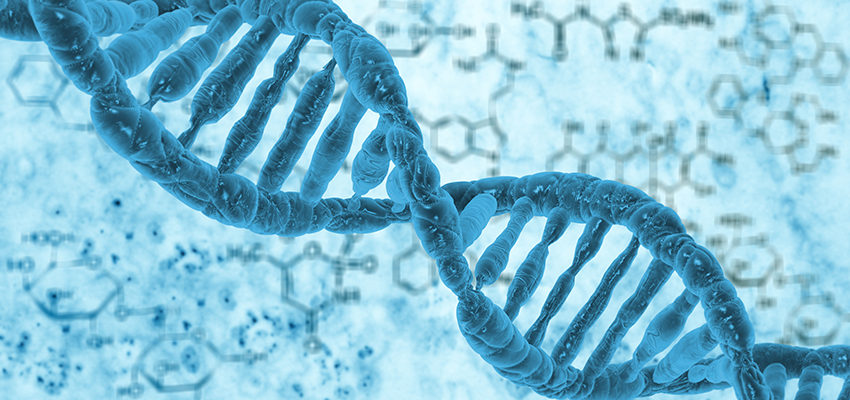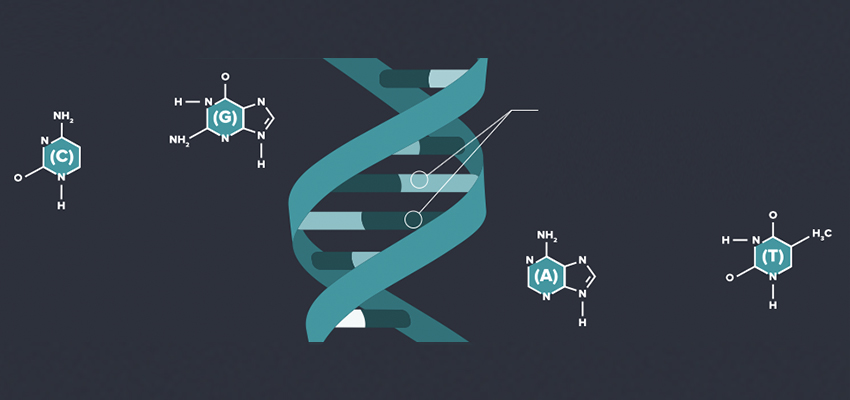What is DNA?

With the rise in popularity of consumer DNA tests, you’ve likely been hearing a lot about DNA — according to Google, searches for “DNA Tests” have increased 60% since 2016 — but do you really know what it is? In this blog post, you’ll learn what DNA is, how it works, and how the work we’re doing here at Orig3n might help you live a healthier life.
What is DNA?
DNA (deoxyribonucleic acid) is the genetic material found in each of your cells and is made up of molecules called nucleotides that provide the instructions an organism needs to develop, live, and reproduce. The sequence of your nucleotides creates a “code” that in turn forms the blueprint of you.
Fact: 99.9% of your DNA code sequences are identical to those of every other person — just 0.1% varies between people. That difference is what makes us unique!
DNA Structure
Each nucleotide in your DNA contains a phosphate group, a sugar group, and a nitrogen base. The four nitrogen bases are:
- A – adenine
- T – thymine
- G – guanine
- C – cytosine
Each nitrogen base pairs with its complementary base — A with T and C with G — to form base pairs. Arranged in two long, twisted strands nucleotides form a double helix (what you commonly think of when you hear the word DNA). If you imagine a ladder, the base pairs are the rungs and the sugar and phosphate molecules are the sides. The order or sequence of your base pairs is what creates your genetic code, aka your genes.

Did you know, your DNA molecules are so long that they can’t fit into your cells without first being condensed? To do this, your DNA is tightly coiled into units called chromosomes. All organisms have 23 pairs of chromosomes — half from each parent — that live in the nucleus of each cell in your body and contain your genetic code.
DNA Sequencing vs. Genotyping
There are two main techniques used to uncover an individual’s genetic information: sequencing and genotyping. Sequencing is used to determine the full sequence of a length of DNA base pairs while genotyping looks at only the areas of DNA that vary between individuals and therefore is used to determine the specific genetic variants for some of the base pairs an individual possesses.
Here at Orig3n, we use genotyping, not sequencing, to analyze your DNA. By using this technology we’re able to keep our tests affordable, enabling everyone to gain access to their genetic information and make healthier decisions.
Fact: In 2003, after 13 years of work, the entire human genome was successfully mapped! Sequencing 3.2 billion base pairs of DNA, the sequences mapped cover 99.9% of the human genome. The remaining 0.1% is what makes each of us unique. Read about this incredible accomplishment in our Human Genome Project blog.
How can a DNA test help me?
Your DNA contains a lot of information about you and DNA tests make it possible for you to discover the genetic traits that set you apart! A DNA test compares your DNA code sequences against a giant library of DNA base pair variants that translate into different traits and conditions. There are gene variants that have been identified to correspond with hundreds of thousands of traits. The results you receive from your DNA test depend on what it is looking for. For example, the Orig3n Fitness DNA Test looks at different gene sequences that may influence your fitness potential, from muscle endurance to recovery.
Learn what sets you apart with an Orig3n DNA test. Visit us online to learn more about our suite of lifestyle DNA tests.
References:
https://ghr.nlm.nih.gov/primer/basics/dna
https://www.livescience.com/37247-dna.html
https://www.illumina.com/clinical/illumina_clinical_laboratory/genomics-101/reading-genome.html